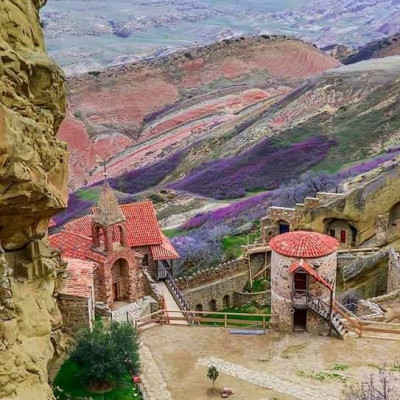
Georgia's mountains are far more than breathtaking landscapes—they are living symbols of strength, spirituality, and cultural identity, revered as sacred for centuries. Rising proudly across the Caucasus, they not only shape the geography of the nation but also its soul, carrying myths, legends, and traditions that define Georgian life. For generations, Georgians have believed that mountains act as bridges between the earthly and the divine. Their immense height, touching the clouds, seemed to bring people closer to God, making them places of prayer, pilgrimage, and reflection. Even before Christianity, mountains were tied to pagan rituals, natural spirits, and protective deities. Villages at their feet built shrines and sacred sites for blessings of fertility, safety, and prosperity. With the arrival of Christianity in the 4th century, this symbolism was transformed rather than lost. Remote monasteries and churches, like Gergeti Trinity beneath Mount Kazbek, embodied isolation, endurance, and spiritual closeness to heaven. Mountains also live within Georgian mythology. Mount Kazbek is linked to Amirani, the local counterpart to Prometheus, punished for defying the gods. This myth portrays the mountains as places of suffering and resilience. In Svaneti, the stone towers rising under the shadow of high peaks are seen as eternal guardians of families and traditions. To this day, rituals and festivals in the highlands preserve these ancient beliefs. Beyond faith and myth, mountains are sacred because they give life. They are the sources of rivers, fertile pastures, healing springs, and ancient forests. For shepherds and villagers, they are both protectors and providers, powerful yet unpredictable. Living in the highlands shaped traditions of courage, hospitality, and resilience, born from the challenges of mountain life. Visitors often feel this sacred aura. The silence of snowy peaks, bells from distant churches, and clouds swirling around jagged summits create a profound feeling of awe. Even those without religious ties experience the mountains as timeless, powerful, and humbling. Preserving this bond is vital today. As modern roads and tourism reach remote valleys, Georgians continue to stress respect for mountains as more than resources. They are cultural landscapes, embodiments of identity, and symbols of continuity. Protecting them means preserving both nature and heritage. Thus, the sacredness of Georgia's mountains is not only in legends and rituals but also in the daily life of people who still see them as eternal teachers of humility, strength, and harmony. This is why Georgia's peaks remain not just landscapes but holy places where nature and spirit meet in timeless unity.






 Deutsch
Deutsch
 русский
русский
